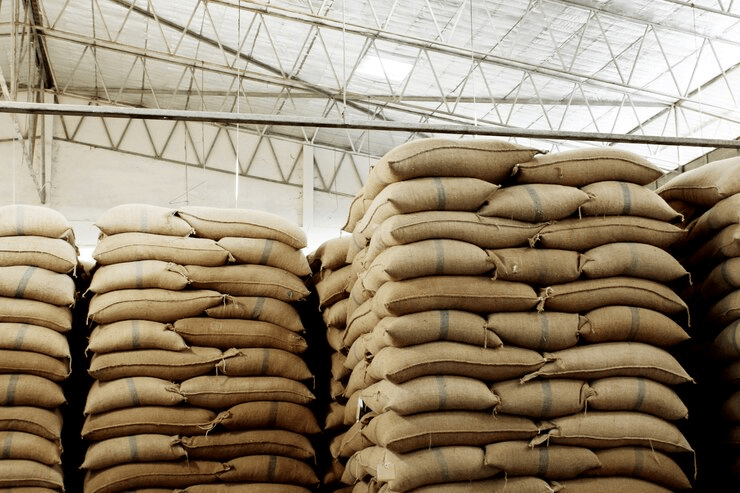Chishti Rice Mills (National Rice Mills) - The First Rice Exporter of Pakistan
Mills
Rice Processing
Laboratory
Introduction
Chishti Traders cultivates high-quality rice in the fertile lands of Punjab, Pakistan, with extensive rice farms located in Kamoke. Our specialized farmers ensure meticulous care throughout the growing process. Spanning vast acres, our farms are equipped with modern de-husking and parboiling units that meet international standards. After harvesting, the rice is brought to our state-of-the-art processing facilities in Kamoke, where it undergoes rigorous quality control before being exported to meet global demand.
De-Stoner Machine
A rice de-stoner machine separates stones and other impurities from rice using air flow, screens, and vibrations.
How it works
- Rice is fed into the machine and spread out on a sieve
- Air is blown through the sieve
- Light grains float to the top, while heavier stones sink to the bottom
- The sieve reciprocates, pushing the stones to the bottom
- The stones are ejected from the machine through a stone outlet
- The grains are blown back into the stream
Rice Polisher
A rice polisher machine uses a combination of water, friction, and rotation to remove the bran and other impurities from rice.
How it works
- Heated water is mixed with high-pressure air to create a water mist
- The water mist is directed into the polishing chamber
- The polishing roller rotates, moving the rice grains through the chamber
- The friction between the rice grains and the roller removes bran and other impurities
- The pressure and temperature of the machine glaze the rice surface
Rice Polisher
A rice polisher machine uses a combination of water, friction, and rotation to remove bran and other impurities from rice.
How it works
- Heated water is mixed with high-pressure air to create a water mist
- The water mist is directed into the polishing chamber
- The polishing roller rotates, moving the rice grains through the chamber
- The friction between the rice grains and the roller removes bran and other impurities
- The pressure and temperature of the machine glaze the rice surface
Elevators
A rice elevator machine uses a belt with buckets to move rice from a lower position to a higher position. The machine is designed to avoid damaging the rice during transport.
How it works
- Rice is placed in a hopper
- A belt with buckets carries the rice to a higher position
- The elevator is designed to run at a low speed to increase the number of buckets and achieve a high capacity
- Anti-drop devices and cage-type rollers are used to prevent seeds from falling into the rollers or being crushed
- The feed bucket and dustpan are designed to allow seeds to directly enter the beans without crushing

Grader/Shifter Machine
Rice grader machines use the difference in size and length between broken and whole rice to separate the two types of rice. They can also be used to process other grains.
How it works
- The machine rotates a flat rotary screen sieve
- The sieve has overlapping plates with different diameters.
- The rice passes through the sieve plates.
- The broken rice is separated from the whole rice.
- The processed rice moves to the output pipes.
Grader/Shifter Machine
Rice grader machines use the difference in size and length between broken and whole rice to separate the two types of rice. They can also be used to process other grains.
How it works
- The machine rotates a flat rotary screen sieve
- The sieve has overlapping plates with different diameters.
- The rice passes through the sieve plates.
- The broken rice is separated from the whole rice.
- The processed rice moves to the output pipes.

Sorter Machine by Colour
A rice colour sorter machine is an advanced technological device used in the rice milling industry to improve the quality of rice by removing discoloured, damaged, or defective grains. The mechanism of a rice colour sorter involves several key components and processes:
Feeding System
- Hopper: Rice grains are loaded into a hopper, which feeds them into the machine at a controlled rate.
- Vibratory Feeder: This ensures a steady and even flow of rice grains onto the conveyor or chute system.
Distribution System
- Chute or Conveyor Belt: The grains are spread out into a single layer to ensure each grain is individually inspected.
- Accelerator: Grains are accelerated to a consistent speed for accurate detection and sorting.
Optical Sorting System
- Cameras or Sensors: High-resolution cameras or optical sensors capture images of each grain as it passes through the detection zone.
- Lighting System: Proper illumination (e.g., LED lights) is used to highlight color differences and defects in the grains.
- Image Processing Software: The captured images are analyzed in real-time by advanced software to identify grains that do not meet the desired color or quality standards.
Ejection System
- Air Nozzles: Defective grains are identified and ejected using precisely timed bursts of compressed air from air nozzles.
- Separation Mechanism: The ejected grains are separated from the good grains and collected in a separate chamber.
Control System
- User Interface: Operators can set parameters such as sensitivity, sorting speed, and acceptable color ranges through a user-friendly interface.
- Automation: The machine is often integrated with automation systems for continuous operation and minimal human intervention.
Output System
- Sorted Rice: The good-quality rice grains continue through the machine and are collected in a designated output bin.
- Rejected Grains: The defective grains are collected separately for disposal or further processing.
Key Features and Technology
- High-Speed Processing: Modern rice color sorters can process thousands of grains per second with high accur
- Quality Control: Ensures the final product meets quality standards by removing defective grains.

Rice Husker
A laboratory-scale rice husker is a compact machine designed for the small-scale processing of rice to remove the husk (outer shell) from the grain. It is typically used in rice mills for laboratory purposes. Key features include:
Specifications
- Compact Size: Designed to fit in laboratory settings, occupying minimal space.
- Adjustable Settings: Allows control over husking pressure, speed, and other parameters to study different rice varieties.
- Efficiency: Capable of processing small quantities of rice (a few kilograms) with precision.
- Simple Operation: Easy to use, often with manual or semi-automatic controls.
- Durability: Made from materials like stainless steel to ensure longevity and hygiene.
- Safety Features: Includes safety mechanisms to prevent accidents during operation.
This machine is ideal for testing rice quality, studying husking efficiency, or developing new rice processing techniques.
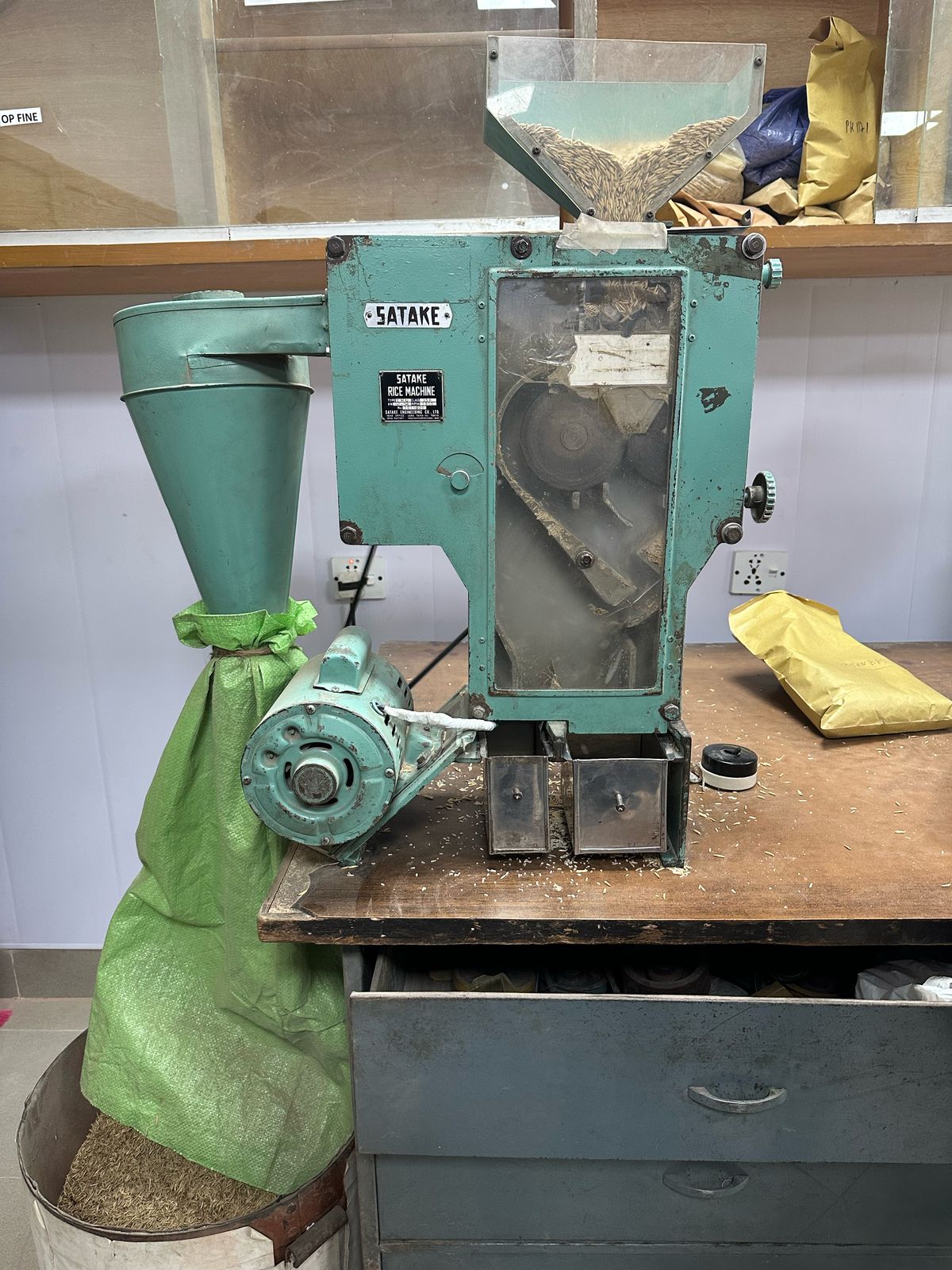
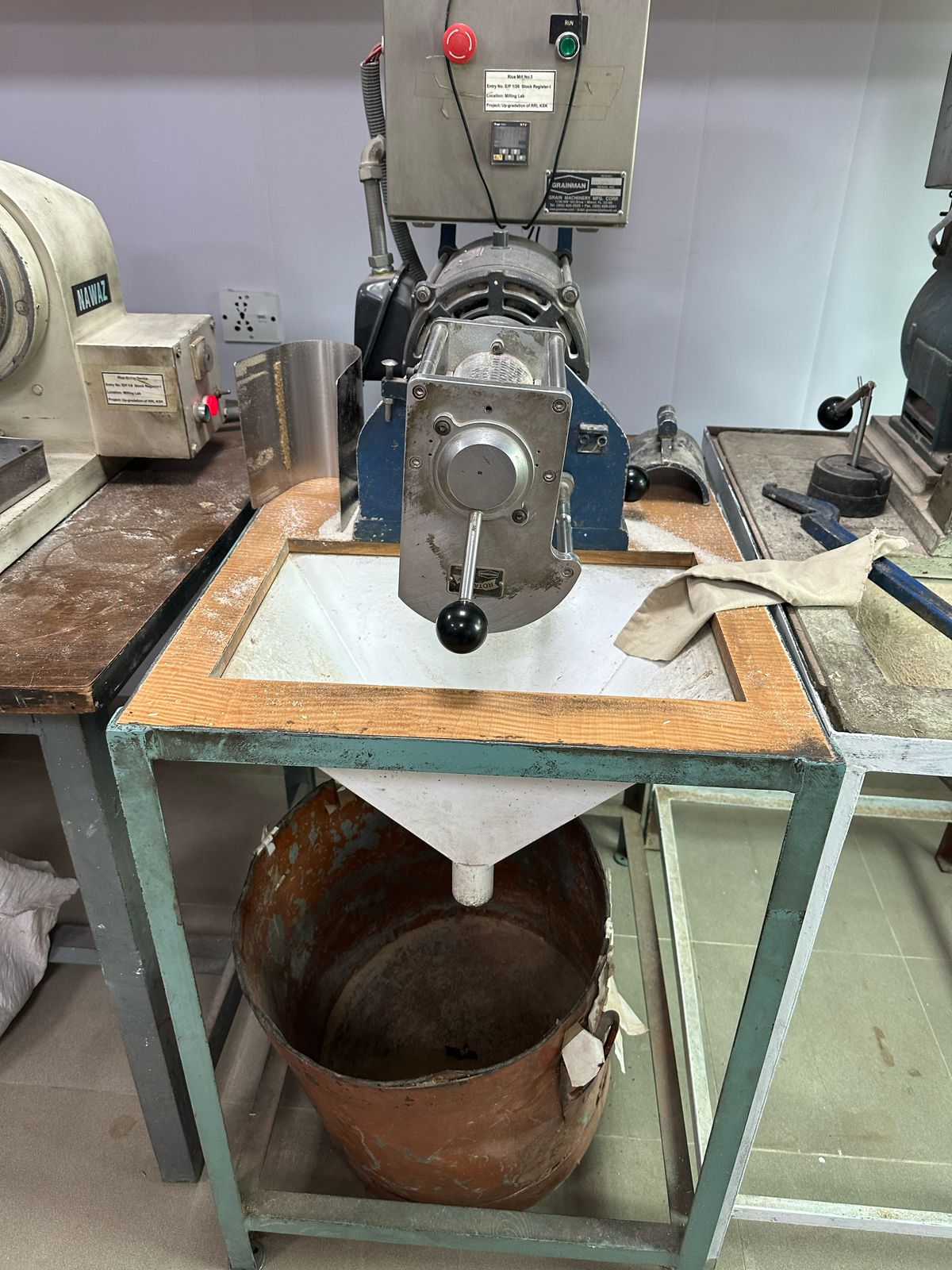
Rice Polisher
A laboratory-scale rice polisher is a compact machine designed for the small-scale processing of rice to remove the bran layer and polish the grain after husking. It is commonly used in research, quality testing, or small-batch processing in the laboratory of Rice mills. Key features include:
Specifications
- Compact Size: Designed to fit in laboratory settings, occupying minimal space.
- Adjustable Settings: Allows control over polishing pressure, speed, and duration to achieve desired whiteness and texture.
- Precision: Capable of processing small quantities of rice (a few kilograms) with consistent results.
- Simple Operation: Easy to use, often with manual or semi-automatic controls.
- Durability: Constructed from materials like stainless steel for hygiene and longevity.
- Safety Features: Includes safety mechanisms to prevent accidents during operation.
This machine is ideal for testing rice quality, studying polishing efficiency, or developing new rice processing techniques. It helps researchers evaluate the impact of polishing on rice texture, nutritional content, and appearance.
Rice Polisher
A laboratory-scale rice polisher is a compact machine designed for small-scale processing of rice to remove the bran layer and polish the grain after husking. It is commonly used in research, quality testing, or small-batch processing in laboratory of Rice mills. Key features include:
Specifications
- Compact Size: Designed to fit in laboratory settings, occupying minimal space.
- Adjustable Settings: Allows control over polishing pressure, speed, and duration to achieve desired whiteness and texture.
- Precision: Capable of processing small quantities of rice (a few kilograms) with consistent results.
- Simple Operation: Easy to use, often with manual or semi-automatic controls.
- Durability: Constructed from materials like stainless steel for hygiene and longevity.
- Safety Features: Includes safety mechanisms to prevent accidents during operation.
This machine is ideal for testing rice quality, studying polishing efficiency, or developing new rice processing techniques. It helps researchers evaluate the impact of polishing on rice texture, nutritional content, and appearance.

Rice Grader
A laboratory-scale rice grader is a compact machine designed for small-scale sorting and classification of rice grains based on size, shape, and quality. It is commonly used in research, quality control, or small-batch processing in laboratory of Rice mill.
Specifications
- Compact Size: Designed to fit in laboratory settings, occupying minimal space.
- Adjustable Sieves/Screens: Equipped with interchangeable or adjustable sieves to sort rice grains into different size categories.
- Precision Sorting: Capable of processing small quantities of rice (a few kilograms) with high accuracy.
- Simple Operation: Easy to use, often with manual or semi-automatic controls.
- Durability: Constructed from materials like stainless steel for hygiene and longevity.
- Versatility: Can grade rice based on length, width, or thickness, depending on the setup.
This machine is ideal for testing rice quality, studying grain uniformity, or developing new grading techniques. It helps researchers evaluate the physical characteristics of rice, such as grain size distribution, which is critical for market standards and consumer preferences.
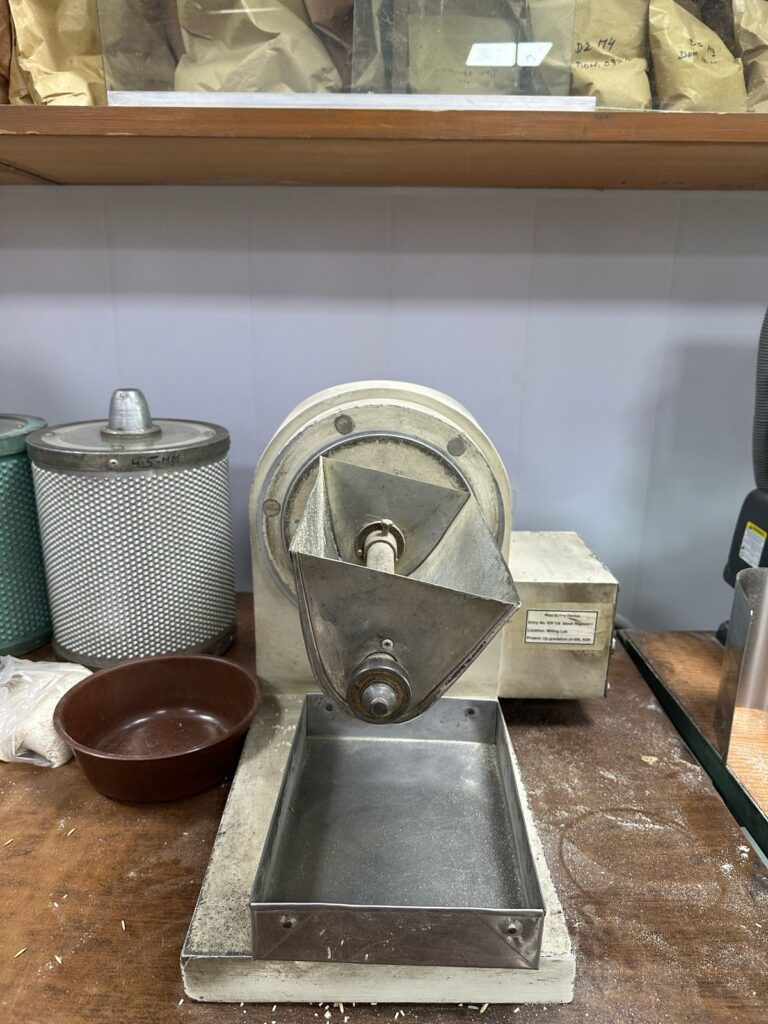
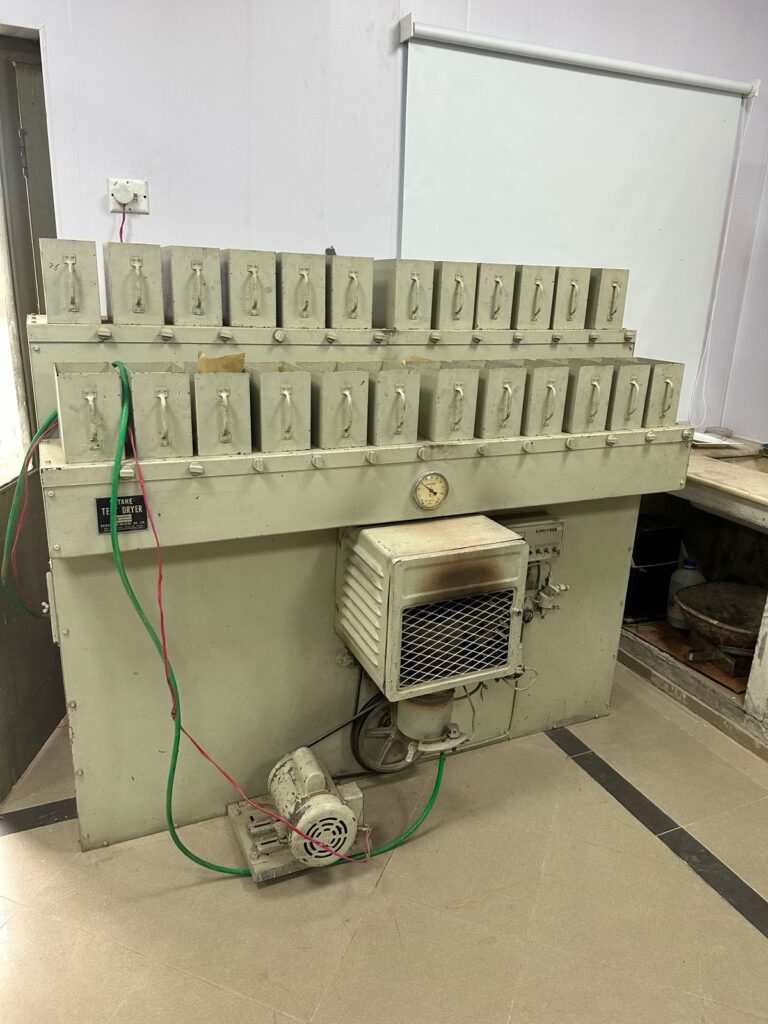
Paddy Dryer
A laboratory rice paddy dryer machine mechanism involves the controlled drying of rice grains in a small-scale, precision environment. Key components and processes include:
Specifications
- Drying Chamber: Houses the rice paddies and provides a controlled space for drying.
- Heating System: Uses electric heaters or other heat sources to generate warm air at adjustable temperatures.
- Airflow System: Includes fans or blowers to circulate hot air evenly across the rice grains, ensuring uniform drying.
- Temperature and Humidity Control: Sensors and controllers maintain optimal drying conditions to prevent over-drying or cracking of grains.
- Tray or Mesh System: Holds the rice paddies in thin layers, allowing efficient air circulation and heat transfer.
- Moisture Removal: Evaporates moisture from the grains, which is then vented out of the chamber.
- Monitoring System: Tracks drying progress, moisture content, and other parameters in real-time for precise control.
This mechanism enables researchers to study and optimize drying conditions for rice quality and efficiency.
Paddy Dryer
A laboratory rice paddy dryer machine mechanism involves the controlled drying of rice grains in a small-scale, precision environment. Key components and processes include:
Specifications
- Drying Chamber: Houses the rice paddies and provides a controlled space for drying.
- Heating System: Uses electric heaters or other heat sources to generate warm air at adjustable temperatures.
- Airflow System: Includes fans or blowers to circulate hot air evenly across the rice grains, ensuring uniform drying.
- Temperature and Humidity Control: Sensors and controllers maintain optimal drying conditions to prevent over-drying or cracking of grains.
- Tray or Mesh System: Holds the rice paddies in thin layers, allowing efficient air circulation and heat transfer.
- Moisture Removal: Evaporates moisture from the grains, which is then vented out of the chamber.
- Monitoring System: Tracks drying progress, moisture content, and other parameters in real-time for precise control.
This mechanism enables researchers to study and optimize drying conditions for rice quality and efficiency.







